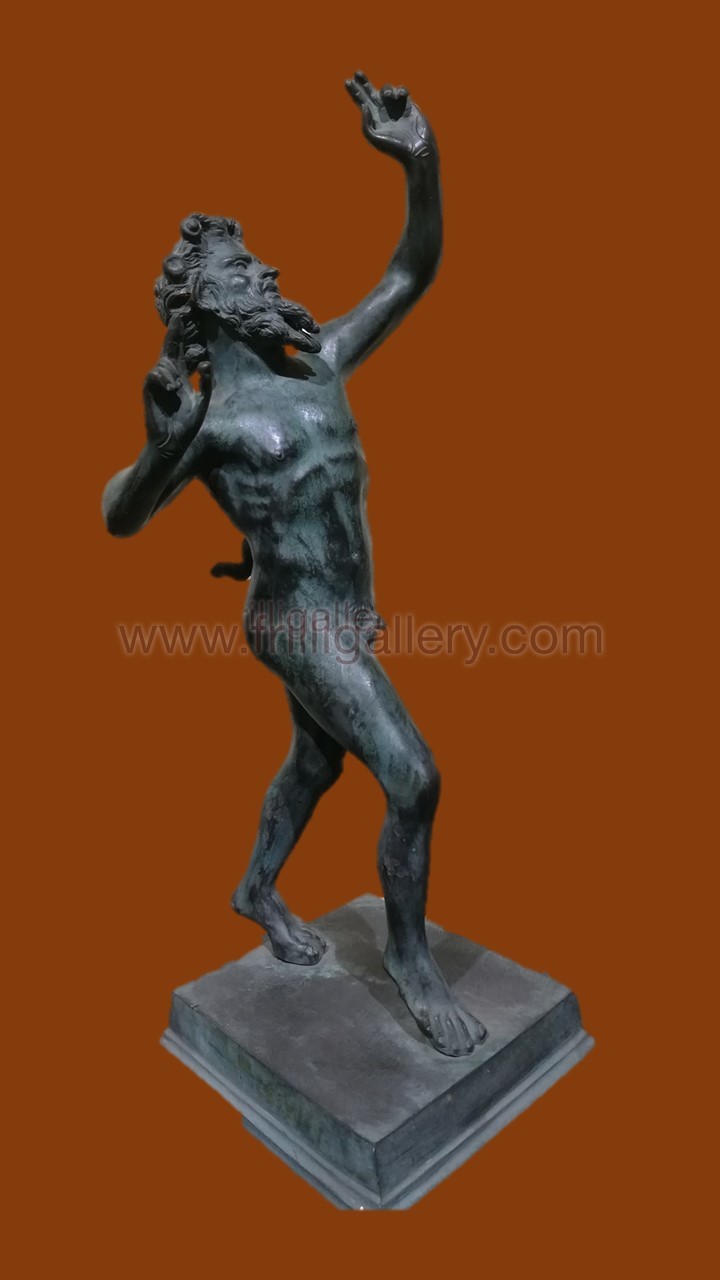


The statue is a representation of a dancing faun, a deity of nature corresponding to the satyr of Greek culture. From the splendid bronze sculpture of the dancing Faun derives the name of one of the greatest Pompeian finds, the Casa del Fauno, which adorned the impluvium and today it is conserved in the National Archaelogical Museum of Naples. The house of the Faun, monumental since its external structure, had a floor made of yellow porphyry and limestone stones. On the threshold there is a mosaic in minute cards with garlands and the theatrical masks. The most reliable hypothesis is that these mosaics, together with the bronze statue of dancing faun, refer to the name of the family that owns the house, the Satrii, an ancestor of whom it is thought to have participated in Alexander's campaign in Asia.
The Faun looks like a naked, bearded male figure, with his head turned back, a thick hair and his gaze turned to the sky. On tiptoe, with his right arm and left leg extended and right arm and right leg bent, he seems to hint at a dance step. Elements such as the horns of goat on the head and the presence of the tail, suggest that it is a Faun, or rather a Satyr in the grip of bacchic intoxication or religious ecstasy. From a technical point of view, masterful is the yield of the musculature, extremely sinuous: the refinement of the execution suggest that the work is attributable to a centre of Hellenistic production, probably Alexandrian.
To request info for this item please use the following form